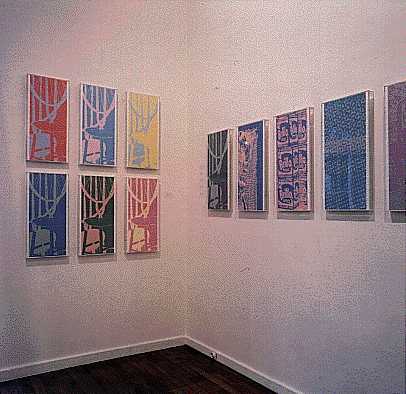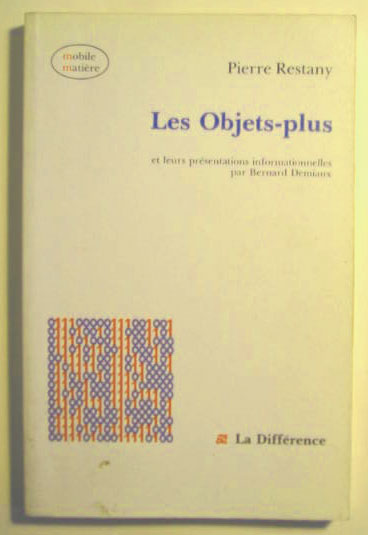a.digital objects-plus
The beginning interrogation is the following: what today may be considered as "object-plus" in the same way as the "objects-plus" of Duchamp (bicycle tire), César (compressions) and Warhol (photographic transfer) in their time. Today, our era is marked by the cross-utilisation of digital machines which treat and circulate information according to IT technologies. The new "objects-plus" are placed in the field of Information Technology, and are closely related to Computer Science. The new objects are IT objects. In fact, the primary action is the binarisation of data, therefore already its modification (suppression of ambivalences...). The significant point is more to put data into memory than to communicate it (cf, epoch media by Warhol, Paik). The extra information is a result of the binary process. The IT objects-plus are the contents as such of the memories of events.

Digital Presentations, Binarisations of Duchamp, César, Warhol, Paik...
computers prints 32 x 64 cm , Beaubourg Gallery Paris, 1989
b. IT challenges
The challenge for the artist is to employ processes which touch the memorization of data as well as its deformation. The object-plus was industrial with Duchamp and César, then became communicational with Warhol and Paik; today, the object-plus becomes digital. Post-modernity for the artist means to work from events which he seeks in his proximity (events of his own history, his traditions) and for him, it is a question of:
- Presenting the memory of events as the content of their binarisation: the artist seeks to present the unpresentable.
- Deviating, changing and transforming these memories, of exploring the deviations through the process of transformation, of imagining what is happening in the memories if they are modified in content by tiny gaps, and of measuring their impact on meaning.
c. IT presentations
The work of the artist is based on 4 basic givens:
- to show the unpresentable - ie, the state of memories
- to demonstrate "gulliver" - the loss of relationship in scale of data
- to work with events characterized by proximity, tradition and history
- to show the loss of meaning, to reach the limits of appearances.

1989. Objets-plus, challenges and IT presentations
(extracts from the note January 23 th 1989 for the book, Objects Plus and Digital Presentations, published in 1989 by Editions de la Différence in collaboration with Pierre Restany)